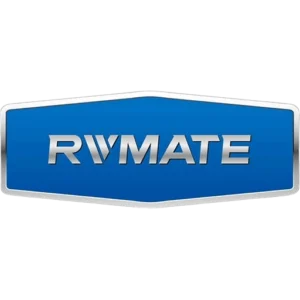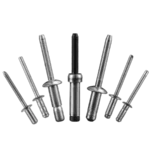How to Choose Rivet Fasteners for Solar Roof?
Table of Contents
How to choose rivet fasteners for solar roof?
If you are looking for reliable solar roof rivets solutions for your solar roof project, then this guide will be of great help to you.
This blog introduces you to the common applications of rivet fastener for solar roof as, core factors for choosing rivets and types of solar roof rivets.
Why the selection of solar roof rivets is crucial?
In the Solar Roof system, rivets are not only a kind of fasteners, but also a key link to ensure the long-term stable connection between modules, brackets and roof, wind and corrosion resistance, anti-seepage and anti-loosening. Its performance directly affects the safety, service life and maintenance cost of the system.
Solar roofs are exposed to multiple environmental pressures such as high temperatures, strong winds, rain, snow, UV rays and moisture for a long time. If the rivets are not properly selected (such as material mismatch, insufficient strength, lack of sealing performance), it is easy to cause frame riveting, bracket loosening, water vapor intrusion, corrosion and perforation and other problems. Even in serious cases, it may lead to component falling, roof leakage, and even cause property and personal safety hazards.

Therefore, choosing the right rivet fasteners for solar roof is not only a matter of mechanical connection, but also a comprehensive decision on the structural safety, corrosion reliability and installation efficiency of PV system.
As a professional rivet manufacturer, Rivmate suggests customers to select the rivet fasteners systematically according to the roof structure, installation parts, environmental grade, material combination and other factors to avoid the risk of “replacing engineered parts with universal parts”. In this article, we will start from the actual application to help you accurately match the position and function of each rivet.
Common locations for rivets in solar roofs
In Solar Roof systems, rivets are widely used in a variety of connection locations between modules, racking and roofing structures. Rivets are used for fastening, windproofing, waterproofing and structural reinforcement. Below are the most common rivet locations in Solar Roof and their function description:
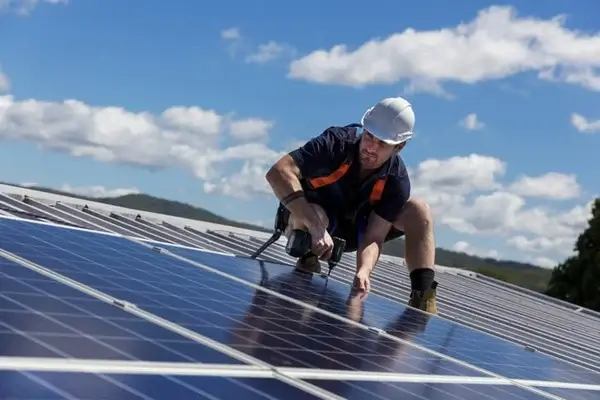
1. Attachment of the module frame to the center block/edge block
- Use: Used to secure solar modules to the racking rails, especially when the aluminum bezel is pre-assembled with accessories.
- Explanation: Usually the connection is aluminum alloy profile, the selection of low expansion, corrosion-resistant blind rivets (such as Tri-Fold Rivets or Closed-End type Rivets) can effectively prevent the edge frame from pulling apart, corrosion and loosening.
2. Fixing point of bracket rail and roof structure interface
- Use: To connect the bottom of the bracket with metal tiles, purlins or roof steel beams to resist wind pressure and vibration.
- Description: This part requires high load bearing capacity, structural rivets (such as Monobolt, Lockbolt) should be used. With high tensile and shear strength, anti-loosening design, to ensure the system is safe and solid.
3. Installation location of cable trays, shrouds and junction box accessories
- Purpose: Installation of cable channel covers, electrical interface protection shields or alignment brackets to ensure that wiring is organized and protected.
- Description: Recommended to use multi-grip blind rivets (Multi-Grip) or bulb type rivets (Bulb-Tite) to adapt to a wide range of board thicknesses, distribute stress, and prevent deformation or loosening of the cover.
4. Flashing, sealing interface structure
- Use: Aluminum or plastic plates are often set up as sealing layer between the solar racking system and the roof to guide drainage and prevent leakage.
- Description: Such parts should use closed type blind rivets (Closed-End), with good waterproofing to prevent mandrel residue or water vapor backflow.
5. Attachment points in BIPV roof photovoltaic (PV) shingle systems
- Use: In building-integrated photovoltaic (e.g., metal tile power generation systems), rivets are used to fix the photovoltaic modules directly to the metal roofing substrate.
- Description: Triple-flap or low expansion structure rivets should be used, suitable for light and thin profiles, to prevent damage to the roof coating or insulation structure.
| Application Area | Function of the Rivet | Recommended Rivet Type |
|---|---|---|
| Module frame + clamp connection | Anti-crack, anti-loosening, corrosion-resistant | Tri-Fold / Closed-End Rivets |
| Mounting rail to rooftop | High shear & tensile strength, wind resistance | Monobolt / Lockbolt |
| Cable tray / junction box mounts | Fast installation, stress dispersion | Multi-Grip / Bulb-Tite Rivets |
| Waterproof layer & sealing zones | Watertight seal, prevents stem fallout | Closed-End Rivets |
| BIPV solar roof integration | Lightweight fastening, avoids roof damage | Tri-Fold / Soft-Grip Rivets |
Core factors to consider in solar roof rivet selection
There are many factors to consider when choosing the right one for your solar roof system. Rivets not only affect how securely the modules are mounted, but also directly determine the safety, corrosion resistance, waterproofing and maintenance costs of the entire system during long-term outdoor operation. Below are 4 core factors that must be considered when selecting rivets for Solar Roof:
- Types of connecting materials and matching relationship
- Roof environment and climatic conditions
- Waterproof sealing and risk of rainwater backup
- Structural strength and wind vibration resistance
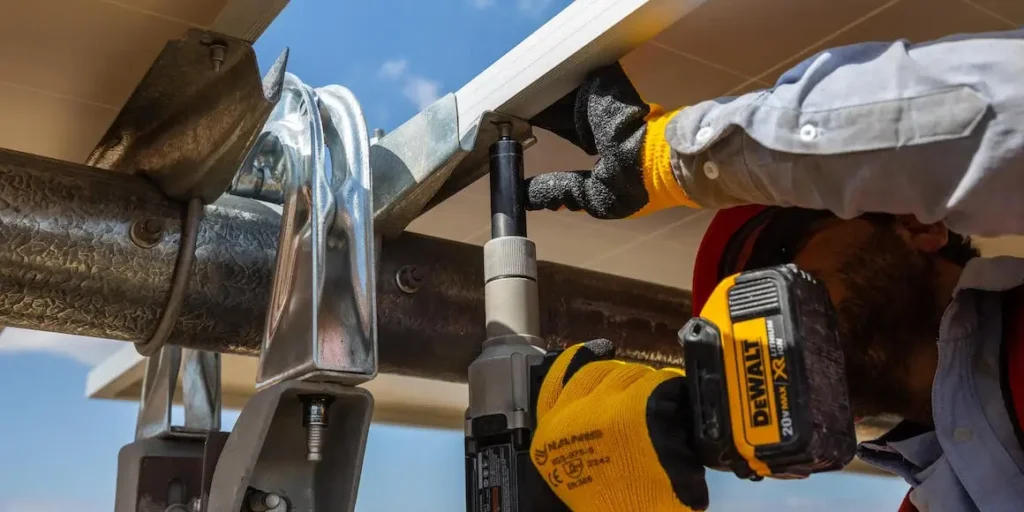
Types of connecting materials and matching relationship
Importance: Galvanic corrosion is easily formed between different metal materials if their electrochemical properties are not compatible. This can cause corrosion failure of aluminum frames, galvanized steel brackets or roofing structures.
- Aluminum frame recommended with: aluminum rivets or stainless steel core aluminum body rivets
- Galvanized steel brackets: galvanized steel or Dacromet treated rivets are recommended.
- If rivets span two different metals, insulating shims or anti-corrosion layers should be added.
✅ Pit Avoidance Tip: Avoid using carbon steel exposed rivets for fixing aluminum alloy parts, especially in humid or coastal areas.
Roof environment and climatic conditions
Important: Roofing is a complex environment with year-round exposure to wind, rain, sunlight, temperature differences, dust and corrosive gases, rivets must be weather resistant over the long term.
- Coastal or high humidity areas: Stainless steel or Dacromet coated rivets are preferred, meeting ≥240 hours of salt spray testing.
- High-temperature and sunny areas: thermal stability of the rivet mandrel and tensile strength degradation should be a concern.
- Windy areas (e.g. high altitude or open roofs): use structural high-strength rivets to improve shear tensile strength.
✅ Technical advice: Choose certified products with actual environmental test data (e.g. salt spray, thermal cycling).
Waterproof sealing and risk of rainwater backup
Important: Rivets in the Solar Roof used in the sealing layer, water guides, or around the perimeter of the control box can lead to water leakage or corrosion spreading if the seal fails.

- For blind holes or sealed joints, use Closed-End Rivets.
- Rubber gaskets or one-piece waterproof cap rivets are recommended for critical locations.
- Check for flush or exposed cores after installation.
✅ Risk Warning: The use of common open end rivets to fix the lower closure plate can create a rainwater channel in case of rain and cause electrical or structural accidents.
Structural strength and wind vibration resistance
Importance: The wind loads on the roof are complex and the rivets must withstand the effects of tension, shear and frequent thermal expansion and contraction.
- Primary structural connections: structural blind rivets (Monobolt, Hemlok) or Lockbolt with ≥5kN shear strength are recommended.
- Component block connections or mounting aids: Tri-Fold, Multi-Grip types with controlled grip can be used.
- Dynamic systems (e.g. tracker systems): reliable, fatigue-resistant cylinders and long-term loosening-resistant construction are preferred.
✅ Design suggestions: Different connection parts should distinguish between “load-bearing connection” and “positioning connection”, and reasonably select the type and size of rivets.
Rivet types for different solar roof structures
Aluminum Edge Frame and Clamp Area Connection Location (Module Frame + Clamp Area)
In roof module installation, the aluminum side frame is fixed to the bracket rail by means of a center or side press. This is a light load connection, the material is thin walled aluminum alloy, if the expansion force is too strong it may cause the frame to tear.
- Recommended Rivet Type: Tri-Fold Blind Rivet or Closed-End Rivet
- Advantage Description: Tri-fold structure can disperse the clamping force, suitable for flexible materials; closed design to prevent the mandrel from falling off and enhance corrosion resistance, suitable for long-life component structure needs.

Roof Deck or Steel Purlins
This type of connection carries the main wind load, snow load and structural vibration of the roof, and is the typical “structural riveting point” in a solar roof system.
- Recommended Rivet Type: Monobolt Structural Rivet or Lockbolt
- Advantage Description: High shear strength and tensile strength, locking core mechanically locked without loosening. Therefore, it is very suitable for structural joints such as color steel tiles, galvanized beams, thick steel brackets and other structural joints. And it can be used as a permanent connection after installation to enhance the overall wind resistance level of the system.
Installation points for accessories such as cable supports, cable bridges and shelter covers
Most of these areas are used for wiring assistance, visual screening or electrical protection, and are “non-structural quick connects”. However, they are numerous and widely distributed and require high construction efficiency.
- Recommended Rivet Type: Multi-Grip or Bulb-Tite Rivet
- Advantage Description: Multi-grip structure can be adapted to different thicknesses of the installation, reducing inventory complexity. These rivets have a gentle expansion structure and uniform force distribution. It can avoid forming indentation or slipping on aluminum plate or plastic cover.
Sealed structural points such as flashing, drainage channels, and ventilation hoods
These areas are directly related to waterproofing. The bottom of the module, the lower part of the bezel or the vent area need to be protected from rainwater back-up and electrical moisture.
- Recommended Rivet Type: Sealed Blind Rivets
- Advantage Description: Closed end structure effectively prevents water vapor from penetrating the riveted joints, and the mandrel locking design avoids leakage due to a loose mandrel, improving the overall IP rating. Stable and reliable performance in humid and high-frequency condensing environment.
BIPV Roof (Metal Tile PV System) Structural Connection Points
In building-integrated photovoltaic systems, the modules are integrated directly into metal tiles or roof panels. Usually composite panels, coated steel sheets or lightweight aluminum substrates. Therefore the structure is lightweight, thin and sensitive to joining pressures.
- Recommended Rivet Type: Tri-Fold or Soft-Grip (low expansion) rivets
- Advantageous Description: The three-flap expansion design avoids pressure penetration or cracking, especially for aluminum panels between 0.7-1.5mm, color steel tiles, etc., to ensure a safe installation process, a solid connection without injuring the panels, and compatibility with the requirements of the building’s appearance.
| Application Scenario | Recommended Rivet Type | Material Suggestion | Functional Description |
|---|---|---|---|
| Aluminum frame connection (module clamps) | Tri-Fold / Closed-End Rivets | Aluminum body + SS stem | Distributes stress, prevents cracking, corrosion-resistant |
| Steel sheet or galvanized roof purlins | Monobolt / Lockbolt Structural Rivets | Galvanized / Stainless | High shear/tensile strength, vibration-resistant |
| Cable trays & accessory brackets | Multi-Grip / Bulb-Tite Rivets | Aluminum / Stainless | Fits varied thicknesses, fast install, prevents distortion |
| Waterproof covers / lower sealing panels | Sealed Blind Rivets | Aluminum / Stainless | Prevents stem fallout, improves waterproofing, anti-rust |
| BIPV solar-integrated metal roofing | Tri-Fold / Soft-Grip Rivets | Aluminum / Zinc-plated | Low expansion force, protects thin panels from cracking |
Solar Roof rivets are carefully matched to the structural stress level, installation location, material properties and sealing requirements.
Rivmate offers a wide range of roof rivets in a variety of sizes and configurations to meet the needs of projects ranging from conventional distributed roofing projects to high standard BIPV projects. If you provide us with a specific roof plan or project type, we can recommend the best match and provide samples for testing. Would you like me to continue organizing my recommendations? We’re happy to
Custom Rivet Fasteners for Solar Roof from Rivmate
In the solar roof system, the rivet is small, but it plays a significant role. It not only bears the core connecting task between the module, stent and roof, but also directly affects the system’s structural stability, anticorrosion life, waterproof security and later maintenance costs. Improper selection may bring serious problems such as corrosion perforation, loose connection, rainwater leakage, etc., which brings high cost to the project.
Rivmate: Specialized Solar Roof Rivet Solution Provider
As a rivet brand specializing in photovoltaic fasteners, Rivmate is committed to providing highly reliable and efficient specialized rivet products and selection services for solar rooftop projects. We provide the following support:
- A full range of Solar Roof rivet models: covering closed, structural, three-flap, multi-grip and other structures, suitable for aluminum frames, color steel roofing, BIPV systems and other connection environments.
- Various anti-corrosion grades are available: aluminum alloy, stainless steel, Dacromet and other materials have passed ISO 9227 salt spray test.
- Support sample sending + drawing docking: according to the customer’s structural drawings to provide one-on-one selection and 3D model file support
- Recommended riveting tools: Improve construction consistency and quality control efficiency.
Welcome to offline communication: communicate with Rivmate face to face about your project needs!
Rivmate participates annually in fastener exhibitions around the world. We will be showcasing our latest generation of solar rivets and project examples. At the show you can:
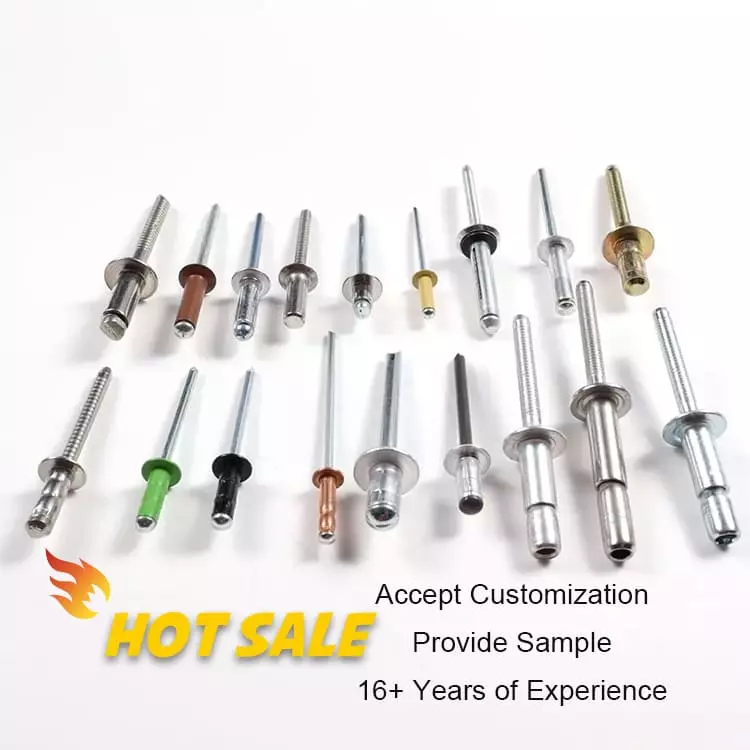
Share:
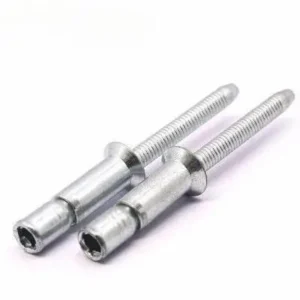
What is the Difference Between Countersunk Rivets and Regular Rivets? – Rivmate Expert Guide
What is the Difference Be

What are Countersunk Blind Rivets Used for?
What are Countersunk Blin
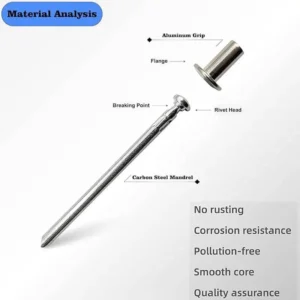
Problem with Rivet Mandrel Breaking
Problem with Rivet Mandre
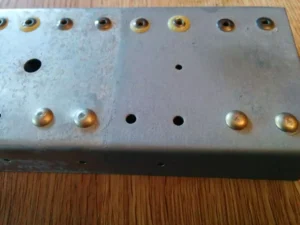
Rivet Corrosion: Causes, Prevention, and Engineering Solutions
Rivet Corrosion: Causes,
